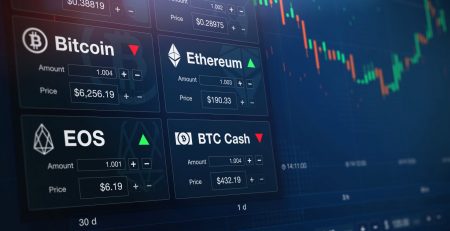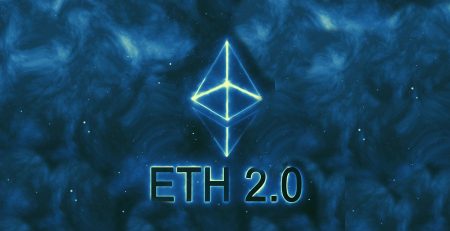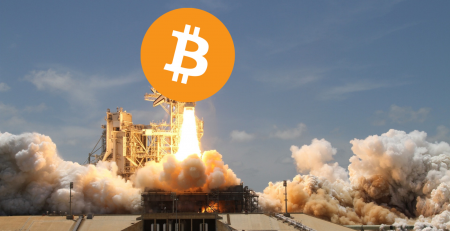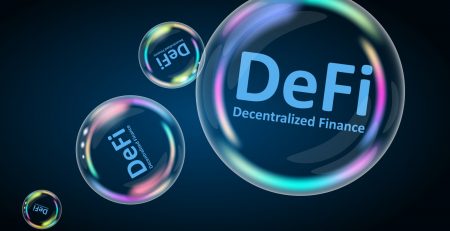How is the value of the Ethereum determined?
Ethereum value : As an investment in Blockchain projects, how do we know we made a good deal? How do we understand the value of a platform and how do we compare it to other platforms? In a blog post, Sir John Hargrave, a prominent Blockchain investor and author of four books, tries to answer these questions by examining the value of Ethereum. You can read this article below.
I’m convinced of the value of Ethereum in the long run: this is the “infinite machine” on which new Blockchain applications are built. Like Windows and Android, Ethereum is the operating system for the new monetary world. This makes Ethereum really valuable.
| Ethereum Value Index | Advantages | Disadvantages |
| Total value locked | It seems to be effective | It alone cannot prove anything |
| Collection of users | Assessing real people | Lack of activity measurement |
| Unique active wallet | Measuring people’s activity | It is abstract |
| Consumed astringent set | Real consumption measurement | Difficult to find |
CoinDesk website; One of the most popular cryptocurrency websites, it has developed a series of webinars to answer the question of how Ethereum is valued. Since you do not have time to spend two hours watching these videos, I have summarized them in this article and stated the important points for you.
Criterion 1: Total locked value
This index is the headline of all news. This is partly due to the over-exaggerated DeFi Pulse website chart.

Total Value Locked is multiplied by the sum of the digital assets held in Default-wise smart contracts (DEFI) at the current dollar value of those assets.
For example, if you dedicate $ 100 to the uniswap platform to provide liquidity and benefit from trading fees, you are in fact locking $ 100 in the Defi domain.
DappRadar’s Ilya Abugov Webinar describes the locked-in total value as a “marketing indicator”, which I agree with. He meant that the total value of the lock helps to understand the hype (high and exaggerated advertising) about the industry, but it does not serve as a measure of value.
This is because it is denominated in US dollars; So as the price of Ethereum increases, the number of locks increases, even if there is no corresponding increase in usage.
Real users are the real value in Blockchain. The locked value index confuses real users with price fluctuations.
(To address this, the DappRadar website also calculates a modified total locked value and tries to flatten prices using a 30-day moving average. This is an improved version, but still a long way from an ideal one.)
A better indicator to determine the number of real users is the unique active wallets, which are also explained in the webinar. This index is similar to the index of monthly active users in a traditional technology company such as Facebook; A valuable indicator to show how much people are dealing with Facebook (for example, do they log in to their account once a month?)
The Unique Active Money Quality Index sounds simple but complex. During what period do we measure the activity of the wallet? Daily? monthly? yearly? If someone has a wallet and uses it only for long-term storage of the atrium, should not it be counted?
It is very difficult to find relevant and useful data on a unique active wallet. The DappRadar website lists unique active wallets on its Defi page, but it is hard to believe the figures provided. DappRadar, for example, reports that only 931 unique wallets have been active in the last 24 hours for the Compound Cryptocurrency, while according to the Dune Analytics website, the cryptocurrency has more than 250,000 users.
Criterion 2: Number of accounts
In the webinar, Joanes Espanol of Amberdata spoke about measuring the number of Ethereum accounts as a way to determine the value of Ethereum.
Let’s imagine that Ethereum is a global bank. If we count the number of customer accounts that use this bank every month, does it not give us an idea about the value of the bank?
The first problem is that bank accounts can hold very little or too much money; So if a bank has 100 very wealthy customers, they are potentially worth more than the 1,000 customers who constantly have returned checks; So the number of accounts is not very useful to show us the absolute value.
The second problem is that some accounts are maintained by humans and some accounts are maintained by smart contracts. When people enter into a smart contract (which is the basis of Blockchain), sometimes these smart contracts create their own accounts.
In other words, if you and I each have an account and enter into a smart contract that creates a third account, we will somehow double our accounts. However, if you and I each have a traditional bank account and put some money in the trust account, no one will count this trust as a new customer.

Indicator 3: Transaction volume
Liquidity is good. Nature rewards fluidity, whether in a young mountain range or in a healthy circulation network. The same is true of money (cryptocurrency).
Transaction volume is an indicator for measuring liquidity: The more transactions flow through the Ethereum network, the more liquidity there is. Here, too, the analogy we had with the bank continues: If we look at the number of transactions made in a bank, it is a better indicator of the health of the bank than we want to count the number of accounts, because the accounts may be stagnant.
To understand how the value of Ethereum transactions is growing, here is a chart that compares Ethereum and Bitcoin trading volumes by the end of 2020:

The important point of this webinar is that Ethereum breaks down bitcoins in the volume of transactions. At this rate, Ethereum will reach more than $ 1 trillion in annual transactions by the end of 2020 (December 2020 article): the first digital asset to reach such a record.
Remember that Ethereum and Bitcoin are two different things. Bitcoin is just an asset like gold. Ethereum is a complete asset class. Ethereum is the first operating system option for Blockchain; Where all activities take place. That’s why the blue column in the chart above surpasses the gold column: Ethereum is much more practical in terms of transactions.
Why invest in Ethereum? Because money is flowing in it.
Indicator 4: Gas costs
In this webinar, Fredrik Haga from Dune Analytics talks about a topic that I have mentioned as the most important feature so far.
Like many other things in the Chinese blockchain, “Gas” is a confusing term (Blockchain developers are great at math but terrible at naming things).
The easiest way to understand the term gass is the transaction fee for using Ethereum.
The basic idea was that it’s the fuel cell that drives the Ethereum machine. To turn on the car, you have to pay for gas using ether. This is the transaction fee. If someone wants to use the car immediately, the price of Gas (transaction fee) will increase and you will have to pay more for the fee. If you do not pay enough fees, your transaction will run out of fuel.
Remember: Gas = transaction fees. This is exactly like paying a fee to withdraw money from an ATM. If an ATM normally charges you $ 2, and when a large number of people ask you to withdraw money from an ATM, it charges you $ 10, it does exactly the gas mechanism in Ethereum.
For the shrewd Blockchain investor, Gas is a warning mechanism. When the price of gas is high, it is a sign that you have invested in emotions.
Note that this is not always true: if all the rats jump off a cliff and you run in the opposite direction, this can be a good sign, but you usually try to get the tokens that everyone has gotten at the same time as the others. That is why transaction fees are very high.
If you make a profit, the high transaction fee will benefit you, and if you make a loss, the high transaction fee will increase your loss. Because transaction fees are set with gwei, it is difficult to calculate in dollars. Avoid investing when transaction fees are high.
As Christine Kim stated in her superb research note, the total amount of gas consumed is a very useful indicator:

Note that this is not the total gas commission, but the total gas consumption; In other words, price is removed from this equation; So we remove the whole FUD (fear, uncertainty and doubt) and FUMO (fear of loss) from the chart.
For comparison, imagine that we are measuring demand for cars at the beginning of the automotive industry. We do not calculate the cost of gasoline for cars (because it is unstable), but the number of miles driven is important to us. More miles = more use of cars = more demand for cars.
In general, more demand means more value. The chart above shows the growing demand for Ethereum. This means that Ethereum ٍ is increasingly being used to run valuable applications. In this sense, it is similar to measuring the demand for gas and oil (they may have used it for naming).
The total amount of gas consumed can measure the demand for unique Defi applications. Although I do not know of any source that provides such data in a user-friendly diagram. (Great projects for a creative programmer)
Summary
- Although Bitcoin continues to be the market leader in cryptocurrency, Ethereum is potentially the most valuable digital asset on the market.
- This is because Ethereum is being used as a new operating system for Defi applications; Where Bitcoin is merely a bystander and has no role in this.
- This means that Ethereum is likely to be underestimated in price and traded below its true value. But no one knows how to measure its true value. There is a lot of information that is often of little value.
- The value of the total locked is a useless indicator (remember the pride of the locked total); This indicator is useful for viewing hype around Ethereum projects, but avoid considering it for investment decisions.
- The number of people who use blockchain is the most important value factor (blockchain is about people).
- That’s why total users are a good indicator, because real users represent a blockchain. But this indicator does not tell you how many people are actively using it.
- Unique active wallets show the number of people actively using a blockchain, but are difficult to calculate. Because there are different interpretations of what features an “active” user should have.
- Total gas consumption is a great indicator, as it shows the amount of “fuel” consumed to power Ethereum (or any other DIP) and removes the price from the equation. But it is difficult to calculate.
From today I personally use the Total Users Index as my rule for investing in Defi. I know this is not a great indicator, but there is no perfect benchmark for money.
In the end, Blockchain is about people. If the actual number of people using Blockchain is growing rapidly and they get real value from Blockchain, we can consider it a good investment.
More value = more value. This is an equation that we can all agree on.
This article reflects the views only of the author, and should not be construed as an investment proposal.
How is the value of the Ethereum determined?













Leave a Reply